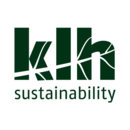Product transparency declaration
The PVC industry has been heavily targeted in the past for the environmental and human health impacts associated with its manufacture, use and disposal. Many industries however benefit from the cost-effectiveness, versatility and light-weight nature of this plastic.
Now, the Resilient Floor Covering Institute, which represents over 95% of resilient flooring manufacturers in North America, including; cork, vinyl, linoleum, and rubber, have launched a new Product Transparency Declaration (PTD). The PTD takes the information provided in Environmental Product Declarations and Health Product Declarations to enable specifiers to understand if the ingredients used in a finished product are in a final form or high enough concentration to be harmful to the health of a building occupant.
This PTD is promoted as easier for manufacturers to navigate and for architects and contractors to understand. In the new PTD the manufacturers are required to list the contents of the finished product as opposed to listing the ingredients used to make the product. This will ensure that the information regarding the catalysts and other by-products of chemical reactions that are dissipated during the manufacturing process are also disclosed and not just the pure raw materials. This will create more transparency about the final product delivered on site.
Another interesting approach the PTD has taken is to simplify the declaration process. According to William Freeman, technical consultant to the Resilient Floor Covering Institute, the current Health Product Declaration is not easy to fill out. This has resulted in a range of consultants charging thousands of dollars to manufacturers to fill out the Health Product Declaration, money that could be more usefully spent on research and reformulation.
The PTD has a more straight forward approach to declaring product contents. The PTD’s are expected to be published voluntarily by product manufacturers but will be verified with the signature of a responsible company official.
It remains to be seen how the industry respond to this new voluntary approach, however, improved simplicity and transparency which enables time and money to be focused on research to exclude the most harmful chemicals rather than paperwork must be applauded.
Although this is not the first time a product manufacturer has created an alternative to the existing environmental standards, it is exciting to see industry driving change from within rather than waiting for legislation.
This article was created by --KLH Sustainability 09:27, 13 December 2013 (UTC) as part of an ongoing series of blogs for Designing Buildings Wiki.
[edit] Find out more
[edit] Related articles on Designing Buildings Wiki
Featured articles and news
A change to adoptive architecture
Effects of global weather warming on architectural detailing, material choice and human interaction.
How big is the problem and what can we do to mitigate the effects?
Overheating guidance and tools for building designers
A number of cool guides to help with the heat.
The UK's Modern Industrial Strategy: A 10 year plan
Previous consultation criticism, current key elements and general support with some persisting reservations.
Building Safety Regulator reforms
New roles, new staff and a new fast track service pave the way for a single construction regulator.
Architectural Technologist CPDs and Communications
CIAT CPD… and how you can do it!
Cooling centres and cool spaces
Managing extreme heat in cities by directing the public to places for heat stress relief and water sources.
Winter gardens: A brief history and warm variations
Extending the season with glass in different forms and terms.
Restoring Great Yarmouth's Winter Gardens
Transforming one of the least sustainable constructions imaginable.
Construction Skills Mission Board launch sector drive
Newly formed government and industry collaboration set strategy for recruiting an additional 100,000 construction workers a year.
New Architects Code comes into effect in September 2025
ARB Architects Code of Conduct and Practice available with ongoing consultation regarding guidance.
Welsh Skills Body (Medr) launches ambitious plan
The new skills body brings together funding and regulation of tertiary education and research for the devolved nation.
Paul Gandy FCIOB announced as next CIOB President
Former Tilbury Douglas CEO takes helm.
UK Infrastructure: A 10 Year Strategy. In brief with reactions
With the National Infrastructure and Service Transformation Authority (NISTA).
Ebenezer Howard: inventor of the garden city. Book review.
Airtightness Topic Guide BSRIA TG 27/2025
Explaining the basics of airtightness, what it is, why it's important, when it's required and how it's carried out.
























